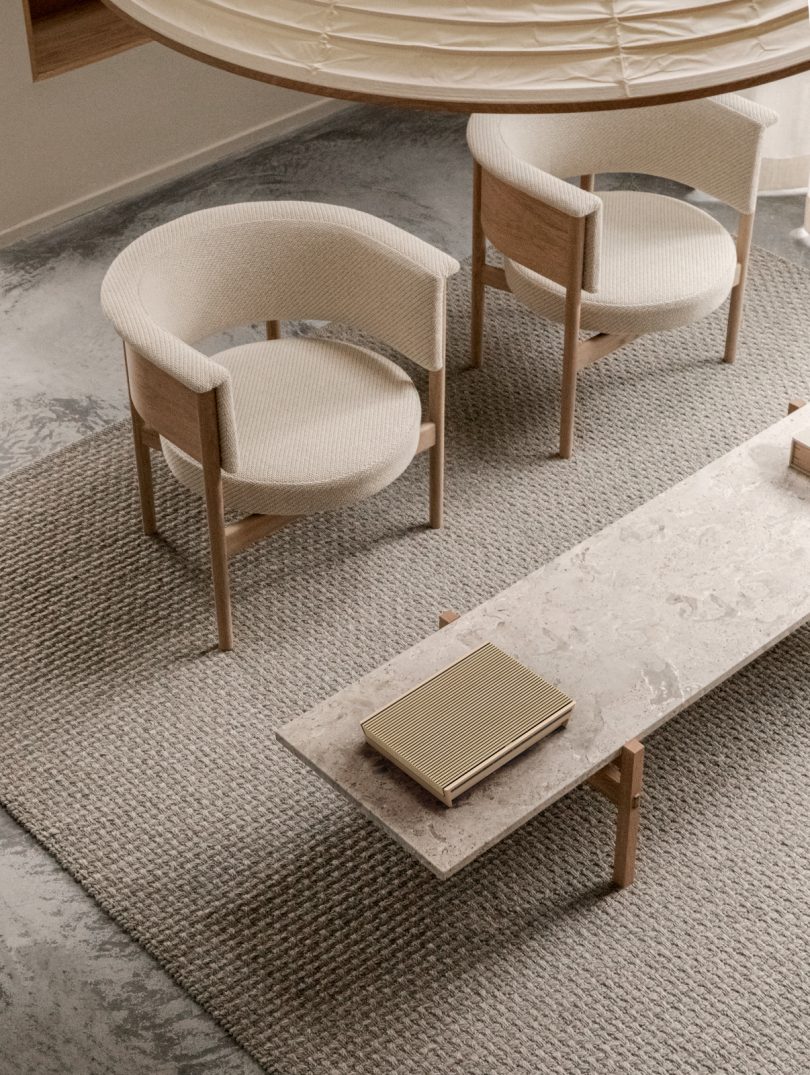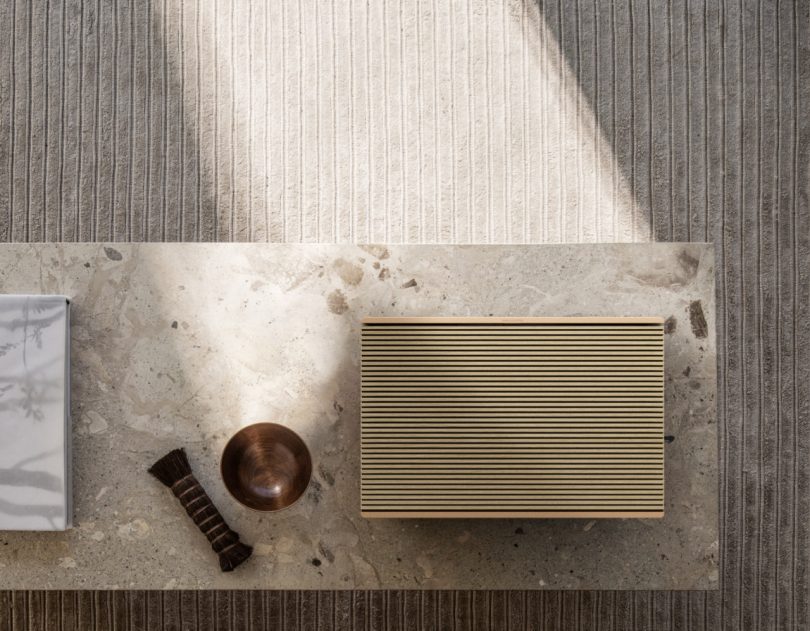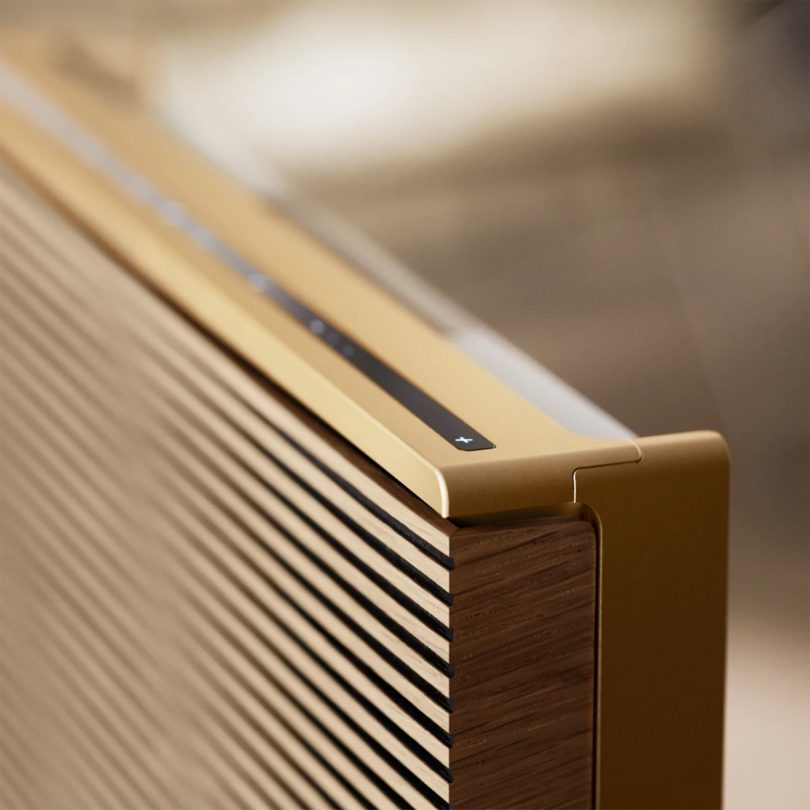My introduction to the Bang & Olufsen Beosound Level wi-fi speaker was made over a video call originating from thousands of miles and several time zones away. Guided by the affable Mads Kogsgaard Hansen – the Danish electronics design brand’s Sr. Global Product Manager – the Level’s bona fides were made underlining how its modular electronics would offer Level owners a path toward upgradeability as apps, services and standards would inevitably change over the lifetime of ownership. Of course, this sort of push toward sustainable ownership all appealed to my eco-conscious mind, but admittedly it was only when Hansen revealed their latest wireless speaker in its gold tone light oak veneer slat edition that curiosity evolved into something more emotional: a desirous response to beauty.

You’d hardly know behind that minimalist design there’s a 5-driver speaker array within; comprising two 0.8in tweeters, a pair of 4-inch woofers, and a 2-inch full range driver powered by amplifiers rated for 105 watts the Level adapts its output according to whether it’s placed vertically or flat facing upward.
With its minimalist precision-cut oak veneers slat cover set plumb into a golden hued aluminum frame, from the front the Beosound Level is evocative of the works of Japanese architect, Kengo Kuma, a precisely executed piece of linearity communicating structure and serenity. But this visual connection was solely of my own making, noting Bang & Olufsen’s catalog is already populated with products exhibiting this same detail in various iterations, including the magically unfolding Beovision Harmony television, a design imagined by Torsten Valeur, the very same designer responsible for the Level’s veneered symmetry.
“The wooden speaker covers are very special to our design team. We introduced the idea of the natural wooden veneer on a black carrier with machined patterns to create the outstanding appearance,” explains Kresten Bjørn Krab-Bjerre, Creative Director of Staged and Flexible Living Categories, Bang & Olufsen.
Look closely at the Beosound Level and one notices an almost imperceptible pattern revealed, one that very gently transforms both in depth and width, resulting in a subtle sense of motion. Krab-Bjerre notes the Beosound 2 speaker exhibits this same sort of sensory induction “where the tapered shape of the cutter, combined with the milling depth, creates this very precise yet natural flow.”

Exemplary of the level of detail and thought given to the overall design, the Level includes a very easy to align magnetic power plug puck that snaps into place on the rear; the Level’s lithium-ion battery is rated for up to 16 hours/4 hours of playback.
Beyond its fetching surface deep impression, the Level’s most noteworthy feature is one dedicated to its future, one envisioned to permit its owner to steer clear of the obsolescence associated with nearly any app-operated electronic device today. The Level is designed from the ground up as a physically upgradeable piece of hardware, one outfitted with modular components and batteries that can be switched out in the instance when its innards are no longer up to the task.
“The modularity approach we have chosen with Beosound Level builds on the groundwork we have put into our new platform, which will be integrated in all upcoming products of the Flexible Living and Staged product categories at Bang & Olufsen,” notes Malte Erich Elborg, Global Product Manager, Bang & Olufsen, “With longevity being a core part of our brand ethos, Beosound Level a prime example of this longstanding commitment.”
Alas, this doesn’t mean Level owners will be able to switch out the componentry themselves for an upgrade; the process will require owners to send in their speaker for the upgrade, with pricing yet to be determined.
Noting the Level is designed to be placed upon a surface, wall mounted or in a table top mode, how does the Level’s output adapt to its orientation?
Malte Erich Elborg: Beosound Level has a dedicated acoustic tuning for each of its placement options (upright standing, laying down and vertically hanging) to optimize the driver layout and acoustic experience for our customers. The Beosound Level has a built-in accelerometer which detects the products placement and adjusts the tuning automatically. The sound experience in the vertical position is similar to the standing orientation. In the standing position, Beosound Level reduces the reflections from the walls by centering the sound in front of the speaker.
This acoustic processing is achieved by a precise beam control which widens the sweet spot of a conventional stereo experience and delivers a rich and diffused sound to anyone in front of the speaker. In the vertical hanging position acoustic tuning also opens the sweet spot whilst reducing the reflections from near walls. The sound processing though is completely different compared to the standing position, as in this case we need to deal with an upward firing orientation of the drivers.
And indeed, the Level’s audio output is perceptibly colored by its position. Recumbent with drivers facing upward, the soundstage takes on a more ethereal presence – here, there, nearly everywhere. Wall mounted or situated on a surface, the directional nature is more evident, but never artificially so.
When asked whether Bang & Olufsen was looking back toward its storied back catalog of design as a roadmap to plot its future, noting the brand’s recent reintroduction of the Beogram 4000c and the organic aesthetics of both the Level and Balance, they’d politely bristle at the observation.
“At Bang & Olufsen, we always work from a use-case,” remarks Kresten Bjørn Krab-Bjerre, “This is the axis we rotate around when making decisions for product specifications, features and design decisions. Sometimes a use case is almost eternal, and you end up with an overall design expression or general form factor that is so strong that it emerges again and again.”
In the case of Level, the silhouette of the old fashioned transistor radio would prove as the framework, a design that proved surprisingly accommodating to modern day technologies within the same form factor.
But the Level is not intentionally a retro design. “We never attempted to make it look like one of the classic models,” says Krab-Bjerre, “The shape and technology simply merged beautifully, meaning that use case became perfectly relevant again.”
from WordPress https://connorrenwickblog.wordpress.com/2021/04/16/bang-olufsen-wants-the-beosound-level-to-be-your-forever-speaker/







No comments:
Post a Comment